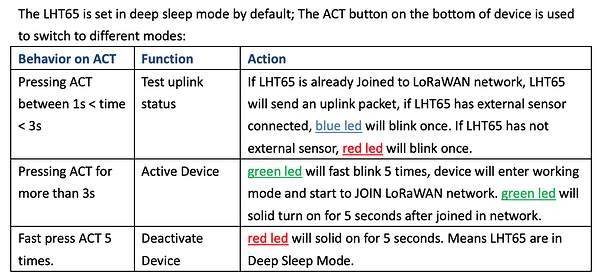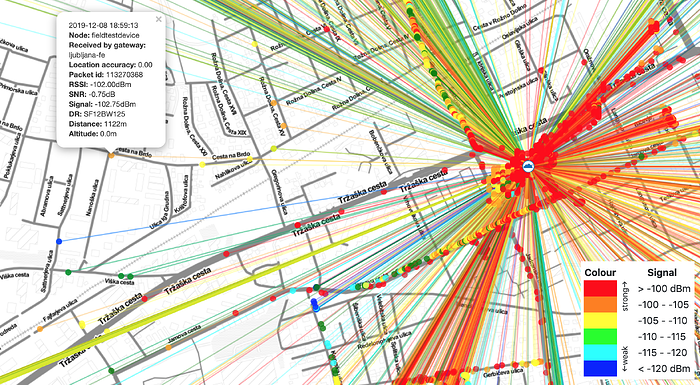The manual you linked to says:
2.2 How it works?
The LHT65 is configured as LoRaWAN OTAA Class A mode by default.
So, OTAA it is, for which you’ll have copied AppEUI, DevEUI and AppKey into TTN Console. Geheimtipp: type each value twice on separate lines in some text editor, to easily visually validate you did not make any typing errors. More details in Registration of node with pre-configured LoRaWAN keys - #2 by arjanvanb, but I guess you did right. So, for OTAA, you should not have used the other values anywhere in TTN Console.
But even then you’ll have to tell us a lot more. Like did you do the following and what was the result?
Do you have a mobile phone with an internet connection? Then open TTN Console on that device and take the device outside. Follow the procedure above and see if the “Status” changes from “never seen” to something else. If not, move closer to the gateway, and so on. If it never changes, you’ll have to re-check the configuration. Once it does change, you know for sure the configuration is okay.
As for coverage: remember that TTN Mapper really only shows the results of people who explicitly go outside to do the mapping. Maps of a single gateway will show clickable markers that tell you some more. Like this shows someone was mapping close by in December 2019, but maybe simply not much nearby mapping was done:
All you can do is try.

